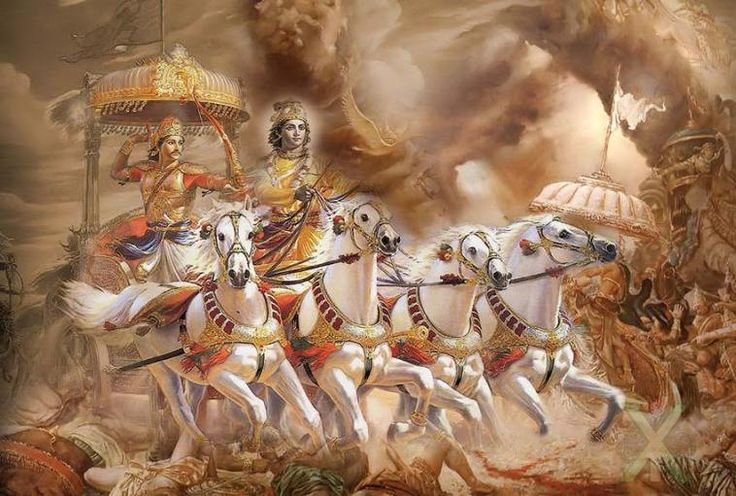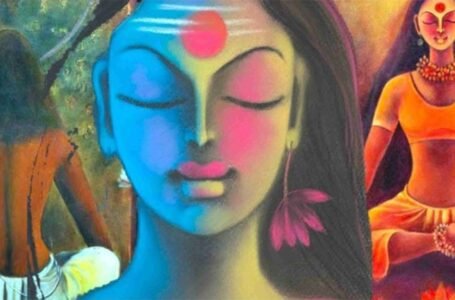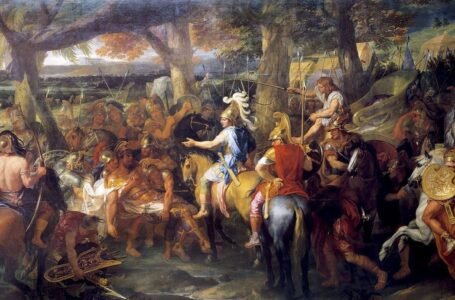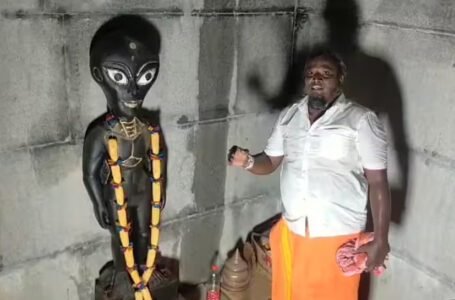Revisiting the Ramayana and Mahabharata in contemporary Hindi Poetry

Revisiting the Ramayana and Mahabharata in contemporary Hindi poetry offers a fascinating lens through which poets reinterpret, question, and reframe the timeless epics to reflect present-day societal concerns, personal struggles, and evolving cultural identity. These reinterpretations often challenge conventional narratives, delve into neglected perspectives, and address issues such as gender, caste, power, and morality. The Ramayana and Mahabharata, despite being ancient texts, continue to hold a powerful influence over the Indian cultural consciousness, and poets today actively engage with them to voice contemporary anxieties and aspirations.
The Ramayana has been a particularly fertile ground for reinterpretation. In modern Hindi poetry, Sita emerges not just as the devoted wife of Rama but as an individual grappling with autonomy, identity, and resilience. Poets like Maithili Sharan Gupt, in his famous poem “Saket,” already provided a sympathetic portrayal of Sita, highlighting her inner strength and dignity. However, contemporary poets go beyond sympathy to assert her agency. Poets like Anamika and Savita Singh craft Sita’s voice to question the patriarchal values that dictated her life. Anamika’s poetry often transforms Sita from a passive sufferer to a voice of strength, one who questions her abandonment and asserts her identity beyond the confines of traditional expectations. The emphasis on Sita’s emotional and psychological state reflects a broader effort to reclaim female voices that have been historically sidelined.
Similarly, poets have reimagined characters like Ravana, not just as villains but as complex figures embodying knowledge, ambition, and rebellion against rigid moral structures. This reinterpretation often serves as a critique of contemporary political and social hierarchies. By presenting Ravana’s intellect and devotion to Shiva as qualities overshadowed by his ego and ambition, poets explore the duality of human nature and the subjective nature of morality. These reimaginings suggest that the Ramayana is not just a tale of good versus evil but a nuanced narrative open to reinterpretation.
On the other hand, the Mahabharata provides even more complex and multifaceted narratives for contemporary poets to engage with. Themes of power, ambition, dharma, and familial conflict resonate deeply with the modern psyche. Poets like Dhoomil and Kedarnath Singh have approached the Mahabharata to comment on the political disillusionment and social unrest of their times. For instance, Dhoomil’s poetry often draws upon the chaos and violence of the Mahabharata to illustrate the fractured state of contemporary Indian society, where ideals are constantly in conflict with harsh realities.
Moreover, the character of Draupadi has gained prominence in contemporary Hindi poetry as a symbol of resilience, defiance, and justice. Unlike the traditional portrayal of Draupadi as a tragic figure, many modern poets highlight her strength and agency. Her questioning of societal norms, particularly in the Vastraharan episode, has become a powerful metaphor for the injustice faced by women even today. The fact that she refuses to be silenced or shamed despite being publicly humiliated makes her an enduring symbol of resistance against patriarchy.
The reinterpretation of Karna is another fascinating trend in contemporary Hindi poetry. Karna, the tragic hero with his constant struggle for acceptance and recognition, embodies the theme of marginalization and identity that resonates with many poets today. His unwavering loyalty, his sense of betrayal, and his relentless pursuit of dignity despite societal rejection are themes that poets often use to comment on caste discrimination, social inequality, and personal redemption.
Furthermore, the figure of Bhishma is often revisited to explore the conflict between duty and morality. His vow of celibacy and loyalty to the throne, while noble, also represents the rigidity of societal norms that can lead to personal tragedy and societal harm. In this sense, Bhishma becomes a metaphor for those caught between personal conviction and the demands of tradition.
Another intriguing aspect of contemporary Hindi poetry’s engagement with the Mahabharata is the exploration of the Kurukshetra war as a metaphor for modern conflicts. The battlefield, with its ethical dilemmas and tragic outcomes, is reinterpreted to comment on political violence, social injustice, and the loss of innocence. The dialogue between Krishna and Arjuna is frequently revisited to emphasize the tension between duty and compassion, action and detachment—dilemmas that continue to plague humanity.
Apart from individual character reinterpretations, contemporary Hindi poetry also engages with the broader philosophical and existential questions posed by these epics. The Ramayana and Mahabharata are not only narratives of divine intervention and heroic deeds but also profound inquiries into human nature, ethical conduct, and the pursuit of truth. Today’s poets often use the language of mythology to question the relevance of these ideals in a rapidly changing world.
Moreover, the reimagining of these epics is not limited to poets who adhere strictly to tradition. Many poets embrace modernist and postmodernist techniques, using irony, fragmentation, and intertextuality to subvert established interpretations. This creative liberty allows them to address contemporary issues such as identity, migration, ecological crisis, and the intersection of personal and political realms. The intersection of mythology and reality in contemporary Hindi poetry demonstrates that the epics continue to be a living tradition, one that evolves to reflect the concerns of each generation.
Furthermore, contemporary poets often juxtapose the ideals of the Ramayana and Mahabharata with the harsh realities of the modern world. For example, poems may present Rama’s exile not as a journey of moral triumph but as a metaphor for societal alienation and personal loss. Similarly, Krishna’s counsel to Arjuna is sometimes reinterpreted as a philosophical struggle against existential doubt rather than simply a justification of duty.
Interestingly, contemporary Hindi poetry also highlights the voices of marginalized characters—those who have traditionally been given limited space in the grand narratives of the epics. Characters like Urmila, Mandodari, Eklavya, and Shakuni are given new dimensions, their stories expanded to challenge established moral hierarchies and reveal the complexity of human motivation. By giving voice to the marginalized, poets critique not only the past but also the ongoing social and cultural inequities of the present.
The poetic engagement with the Ramayana and Mahabharata also reflects a deeper attempt to reconcile tradition with modernity. In the works of poets like Arun Kamal, Kunwar Narayan, and others, one finds an effort to bridge the gap between mythological symbolism and contemporary experiences. This creative dialogue suggests that the epics are not static relics of the past but dynamic texts open to reinterpretation and transformation.
The treatment of Sita’s exile in contemporary poetry, for instance, is often recast as a metaphor for the oppression of women and the struggle for independence and dignity. Poets do not shy away from portraying her agony, frustration, and eventual empowerment. The forest, which once symbolized exile and suffering, is now frequently depicted as a space of self-discovery and freedom. This reimagining of Sita’s narrative reflects broader societal changes, where voices of resistance and reclamation are gaining prominence in literary discourse.
Moreover, the Ramayana’s exploration of dharma, or duty, has been reinterpreted to question the rigid moral codes imposed by society. In contemporary Hindi poetry, poets often critique the glorification of obedience and sacrifice, emphasizing instead the importance of individual agency and ethical autonomy. Rama, traditionally seen as the epitome of virtue, is sometimes portrayed with more complexity, his adherence to duty scrutinized for its human cost. This nuanced portrayal invites readers to reconsider the ideals they have been taught to revere and to question whether those ideals remain applicable in a rapidly changing world.
The Mahabharata, with Its vast array of characters and intricate moral dilemmas, offers even more fertile ground for reinterpretation. The character of Karna, especially, has become a symbol of resilience and injustice in contemporary Hindi poetry. His tragic struggle for acceptance and recognition, despite his exceptional talent and loyalty, resonates deeply with themes of caste and social exclusion. Poets often portray Karna not just as a victim of circumstance but as a hero whose greatness lies in his unyielding determination to assert his identity against overwhelming odds. His story becomes a powerful commentary on the ongoing struggles of marginalized communities in India.
Similarly, the reinterpretation of Draupadi’s disrobing scene serves as a potent metaphor for gender-based violence and the resilience of women in the face of systemic oppression. Her defiance, rather than her victimization, is highlighted in modern retellings, where she emerges as a figure of empowerment who refuses to be silenced. The Vastraharan episode is frequently revisited to critique societal structures that continue to perpetuate injustice against women. By reclaiming Draupadi’s voice, poets draw attention to the importance of agency and the need for societal reform.
Another significant aspect of contemporary poetry’s engagement with the epics is the reconsideration of Krishna’s role as a strategist and philosophical guide. His dialogues with Arjuna on the battlefield of Kurukshetra are often reinterpreted to explore existential questions about duty, morality, and personal fulfillment. Poets grapple with the tension between action and detachment, questioning whether true duty lies in blind adherence to societal expectations or in the pursuit of one’s inner truth. This philosophical inquiry is particularly relevant in a world where ethical dilemmas are increasingly complex and ambiguous.
The figure of Bhishma, too, Is revisited to question the notion of duty taken to its extreme. His unwavering loyalty to the throne, which ultimately contributes to the downfall of his family, is seen as a cautionary tale against rigid adherence to tradition without regard for compassion or justice. Contemporary poets often use Bhishma’s character to critique societal structures that prioritize abstract principles over human welfare, emphasizing the need for a more compassionate and flexible approach to ethics.
Furthermore, contemporary Hindi poetry often engages with lesser-known characters from the epics to highlight perspectives that were previously marginalized. Characters like Urmila, Mandodari, and Eklavya are given voices that challenge the dominant narratives and reveal the nuances of their experiences. By giving space to these characters, poets emphasize that the epics are not monolithic but are instead composed of countless individual stories, each deserving of recognition and reinterpretation.
The Interplay between mythology and reality is another fascinating aspect of this poetic engagement. Contemporary poets often draw parallels between the conflicts depicted in the epics and the socio-political realities of today. The Kurukshetra war, for instance, is frequently used as a metaphor for political violence, communal tensions, and the moral compromises that individuals are often forced to make. By invoking the imagery of the battlefield, poets critique the destructive nature of power struggles and the human cost of ideological warfare.
Moreover, the reinterpretation of these epics is not limited to the philosophical and political realms. Poets also use the language of mythology to explore deeply personal themes such as love, loss, betrayal, and redemption. The emotional intensity of the characters’ experiences allows contemporary writers to express their own struggles and aspirations through a familiar yet flexible framework. This personalization of the epics makes them more relatable to modern audiences, demonstrating that their relevance extends far beyond the religious or historical domains.
Interestingly, the revisiting of the Ramayana and Mahabharata in contemporary Hindi poetry often involves a blending of traditional and modern literary forms. While some poets adhere to classical structures, others experiment with free verse, prose poetry, and even visual poetry to express their ideas. This stylistic diversity reflects the ongoing evolution of Hindi literature and its ability to adapt to changing cultural and intellectual contexts.
Furthermore, the engagement with these epics also reflects a broader attempt to reconcile tradition with modernity. As poets grapple with the contradictions and complexities of contemporary life, they find in the Ramayana and Mahabharata a powerful means of expression. Whether through direct retellings, imaginative reinterpretations, or subtle allusions, they continue to draw upon these ancient texts to explore the human condition in all its complexity.
Ultimately, the revisiting of the Ramayana and Mahabharata in contemporary Hindi poetry underscores the timeless appeal of these epics. They remain not just literary treasures but living traditions that continue to inspire and challenge each new generation. Through their engagement with these texts, contemporary poets contribute to an ongoing dialogue that enriches both the literary landscape and the cultural consciousness of India. By questioning, reimagining, and reinventing these stories, poets ensure that the epics remain relevant, dynamic, and profoundly meaningful in the modern world.
Ultimately, the revisiting of the Ramayana and Mahabharata in contemporary Hindi poetry demonstrates the enduring power of these epics to inspire, provoke, and challenge. They continue to serve as cultural touchstones that allow poets to negotiate their own identities, question societal norms, and explore the complexities of the human condition. In their modern retellings, these epics are not just retold but also reinvented, reshaped, and revitalized, ensuring their relevance for generations to come.


